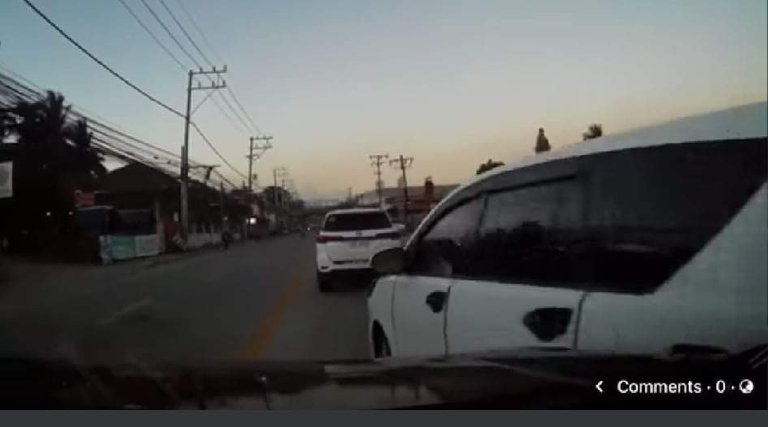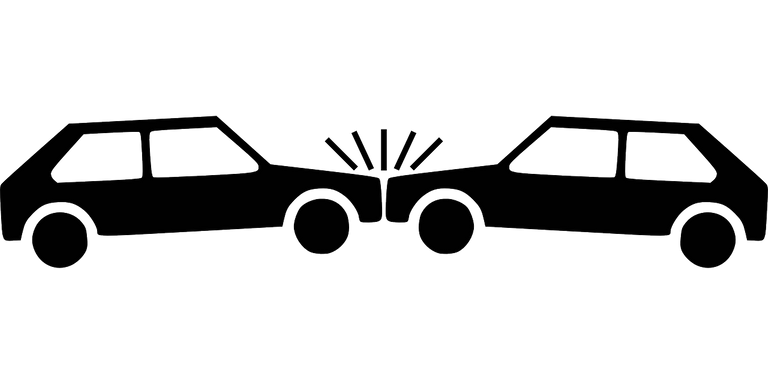(Disclaimer: This is only an explanation of what the Doctrine of Last Clear Chance is. My explanation does not apply 100% to all cases because circumstances differ from one another. This is only a simple and brief discussion on how I understand the said doctrine based on the laws and cases that I have read. If you find any misinterpretation and/or misapplication in my post, please feel free to correct me in the comments section)
It’s a common misconception for most of us to think that we have all the right in the world to do what we want as long as we have the right of way while driving our cars. However, all rights have exceptions, and we must always remember to exercise our rights so as not to injure others.
“In traffic law parlance, the term "right of way" is understood as the right of one vehicle to proceed in a lawful manner in preference to another approaching vehicle under such circumstances of direction, speed and proximity as to give rise to a danger of collision unless one of the vehicles grants precedence to the other.”
Caminos, Jr. vs. People of the Philippines G.R. No. 147437

Credits to VISOR for letting me use this picture. Follow their page on Facebook. I'll be posting the link to their video below.
Res ipsa loquitur or, in English, “the thing speaks for itself”. What we see in the picture is a white vehicle which was hit by the black vehicle with the dashcam. At first, when we look at it, we would probably come to a conclusion that it was the white car’s fault for swerving to the inner lane upon which the black car was traversing.
Let us discuss the Doctrine of Last Clear Chance.
As early as 1918, the Supreme Court had already defined this doctrine. It states that, “the person who has the last fair chance to avoid the impending harm and fails to do so is chargeable with the consequences, without reference to the prior negligence of the other party”. (Picart vs. Smith Jr. G.R. No. L-12219)
In a more recent case, The Supreme Court also ruled that “The doctrine of last clear chance provides that where both parties are negligent but the negligent act of one is appreciably later in point of time than that of the other, or where it is impossible to determine whose fault or negligence brought about the occurrence of the incident, the one who had the last clear opportunity to avoid the impending harm but failed to do so, is chargeable with the consequences arising therefrom.” (PNR Corp., et al vs. Purification Vizcara,et al G.R. No. 190022)
In short, this doctrine states that the person who had the last opportunity to avoid a possible harm with another but failed to do so, through either act or omission, shall be the one liable for the consequence of such negligence.

Source: Pixabay.com
To illustrate, here is an example:
On a 2-lane road, Juan was driving his car. Pedro was also driving his tricycle on the same road but on the opposite side. Pedro was behind a truck, making it impossible for him to see any oncoming vehicles from the opposite side. Wanting to make the most of his “boundary”, he swerved to the other lane to overtake the truck to return as soon as possible to the trike terminal. To his surprise, Juan was also fast approaching. Honking aggressively his horn, Juan continued to move forward thinking that Pedro would give way and return back to his lane. Pedro, however, was not able to due to his distressed position. Thus, the two vehicles collided and Pedro was seriously injured.
In this instance, Juan is at fault for his failure to abide by the doctrine of last clear chance. He had the opportunity to slow down or stop his vehicle as he saw the tricycle in a distressed position. However, he insisted on his right of way which resulted to the collision of both vehicles. Therefore, although traversing in his lane, Juan is liable for the injuries he has caused to Pedro.
“The rule is that the antecedent negligence of a person does not preclude recovery of damages caused by the supervening negligence of the latter, who had the last fair chance to prevent the impending harm by the exercise of due diligence.”
PNR Corp., et al vs. Purification Vizcara,et al G.R. No. 190022
(Disclaimer: This is only an analysis based on my observation on the video. This is not conclusive as to what really happened. I do not claim certainty with my analysis. This is only an opinion and application based on the cases which I have read. I would also love to hear your analysis.)
My analysis of the screenshot:
If you have seen the video from where I took my screenshot, you will see that before the collision occurred. The white car was already signaling to the left (signal lights + position of the tires + intent to accelerate). However, the car with the dash cam was not able to observe due diligence by slowing down and let the white car pass instead to avoid collision. Although the white car sped off after the incident, I still think that it was the car with the dash cam who hit the white car for his lack of foresight (failure to see an imminent danger as a result of one’s act/s).
There are possible circumstances surrounding the sudden turn and acceleration of the white car. It could be that he was trying to avoid a greater injury (colliding with the rear of the jeepney) or that he was also trying to avoid the motorcycle in front of him who was also signaling to the left. These possibilities can be inferred by watching the dash cam video.
I am not justifying the recklessness of the white car, as he too was reckless in a sense that he hastily accelerated to the other lane without making sure that it was safe to proceed. But in accordance with the rulings of the Supreme Court, I can’t help but think that the car with the dash cam was the one who failed to observe the doctrine of last clear chance as he had all the opportunity to slow down or even come to a momentary stop to avoid the collision which could have been foreseen.
“All told, it must be needlessly emphasized that the measure of a motorist’s duty is such care as is, under the facts and circumstances of the particular case, commensurate with the dangers which are to be anticipated and the injuries which are likely to result from the use of the vehicle, and in proportion to or commensurate with the peculiar risk attendant on the circumstances and conditions in the particular case, the driver being under the duty to know and to take into consideration those circumstances and factors affecting the safe operation of the vehicle which would be open to ordinary observation.”
Caminos, Jr. vs. People of the Philippines G.R. No. 147437
Link to the video ( I suggest you repeat the video a few times to notice these factors(signal lights + position of the tires + intent to accelerate)):
https://fb.watch/aO1FMHHDBp/
Thank you for reading! 😄
"Whoever by act or omission causes damage to another, there being fault or negligence, is obliged to pay for the damage done"
Art. 2176 of the New Civil Code

